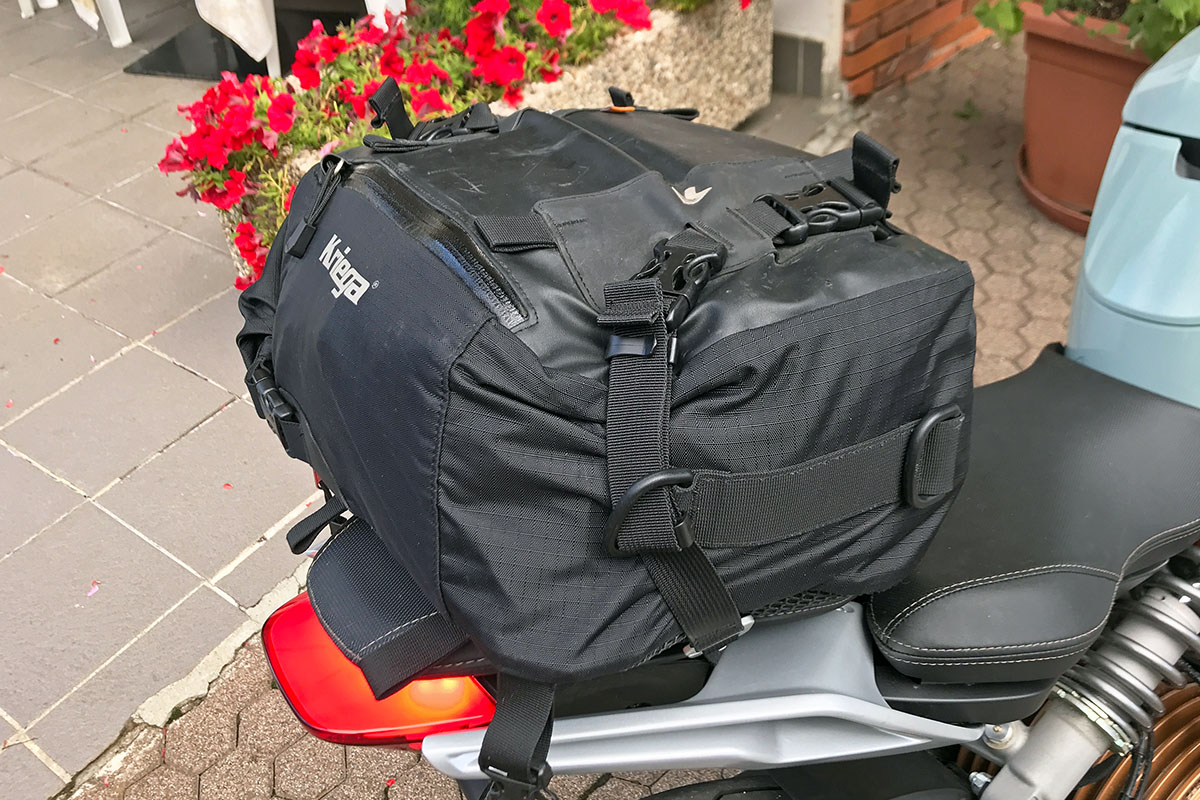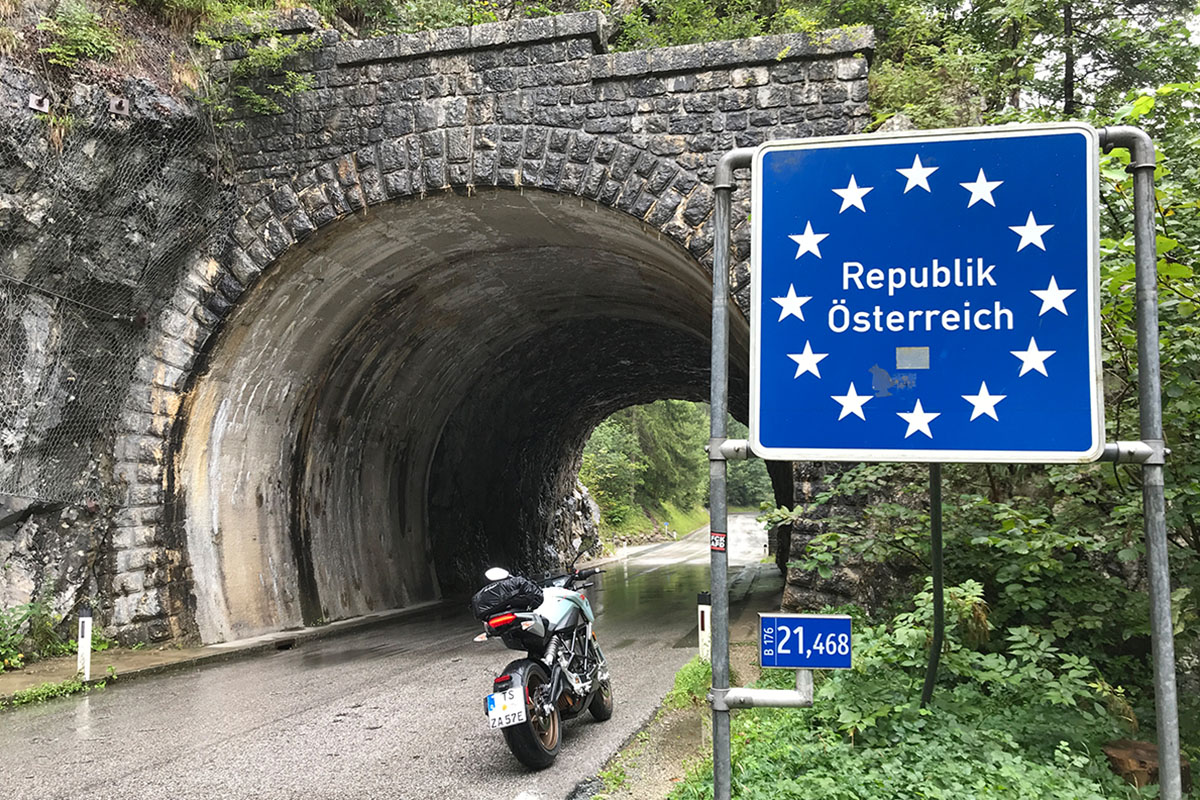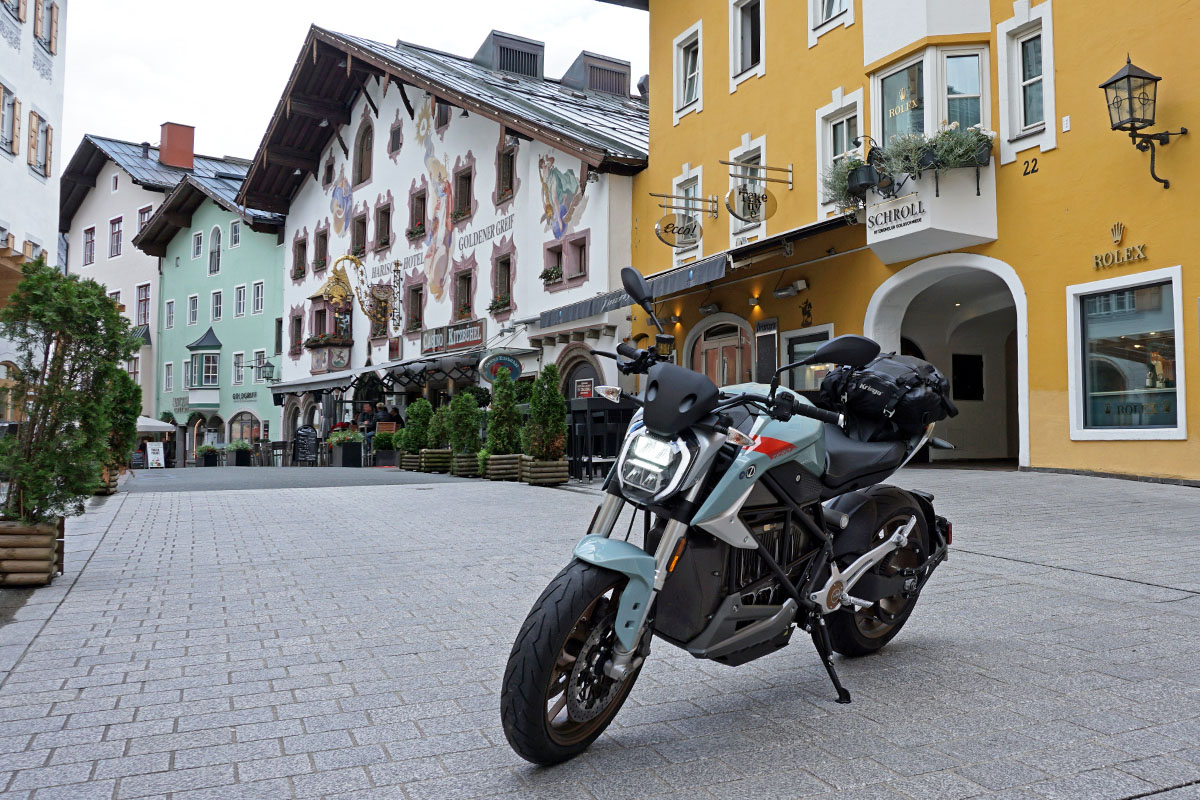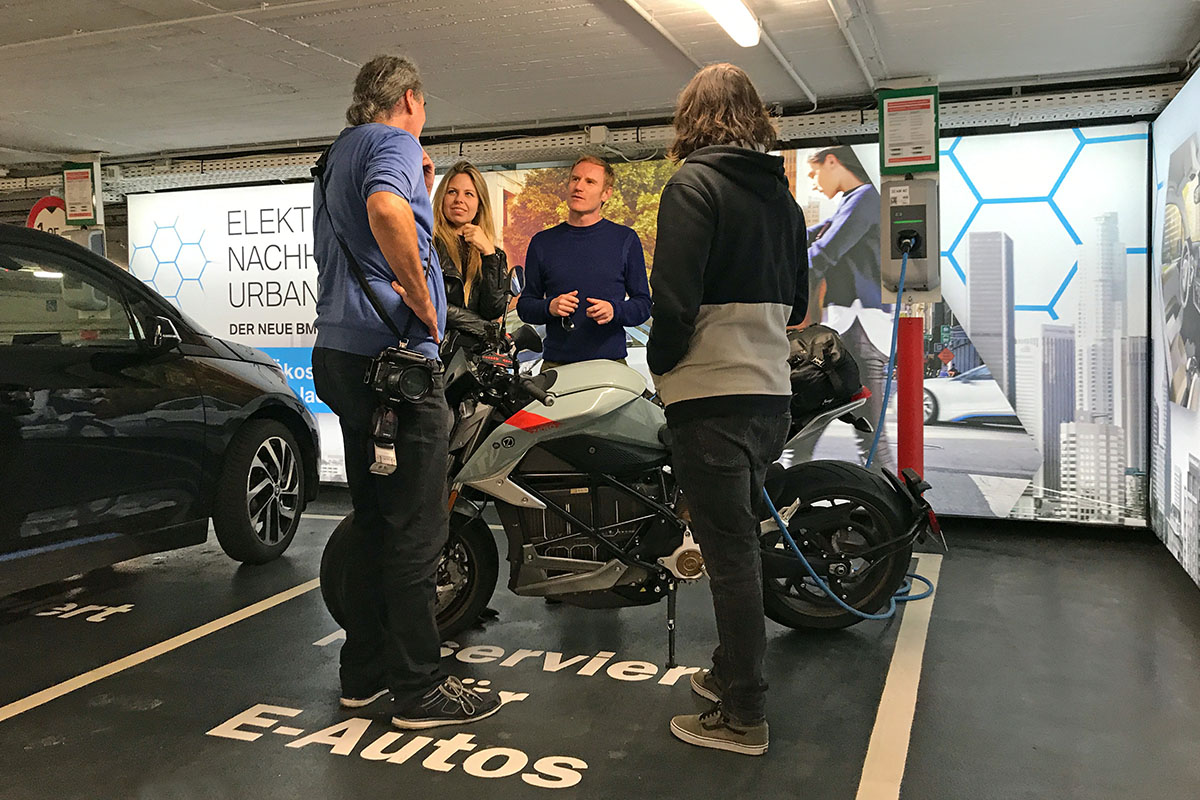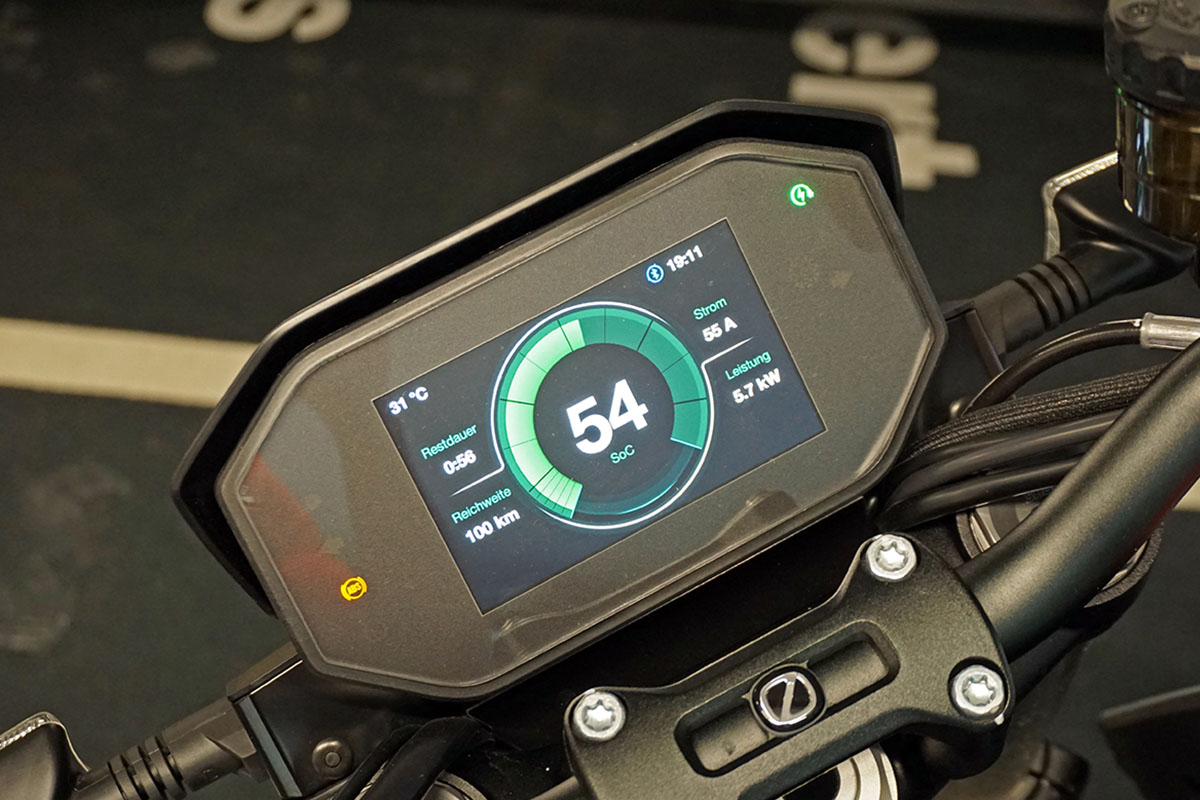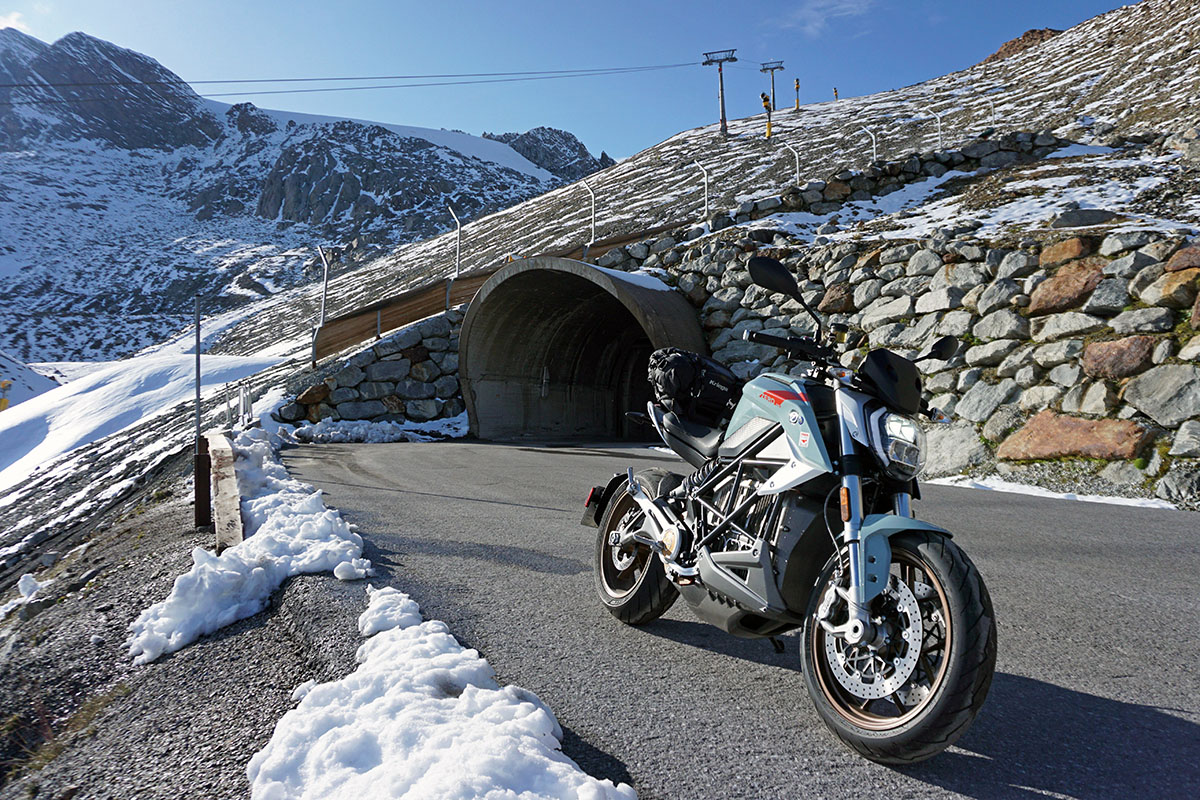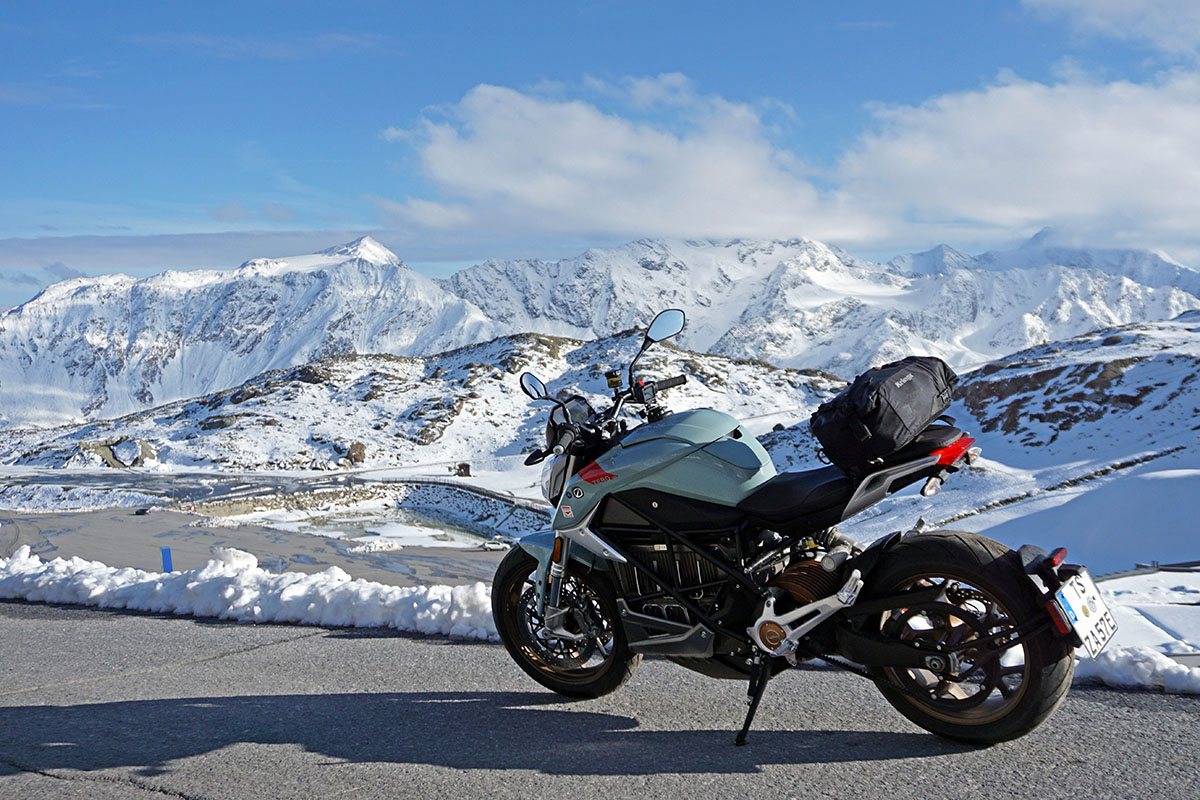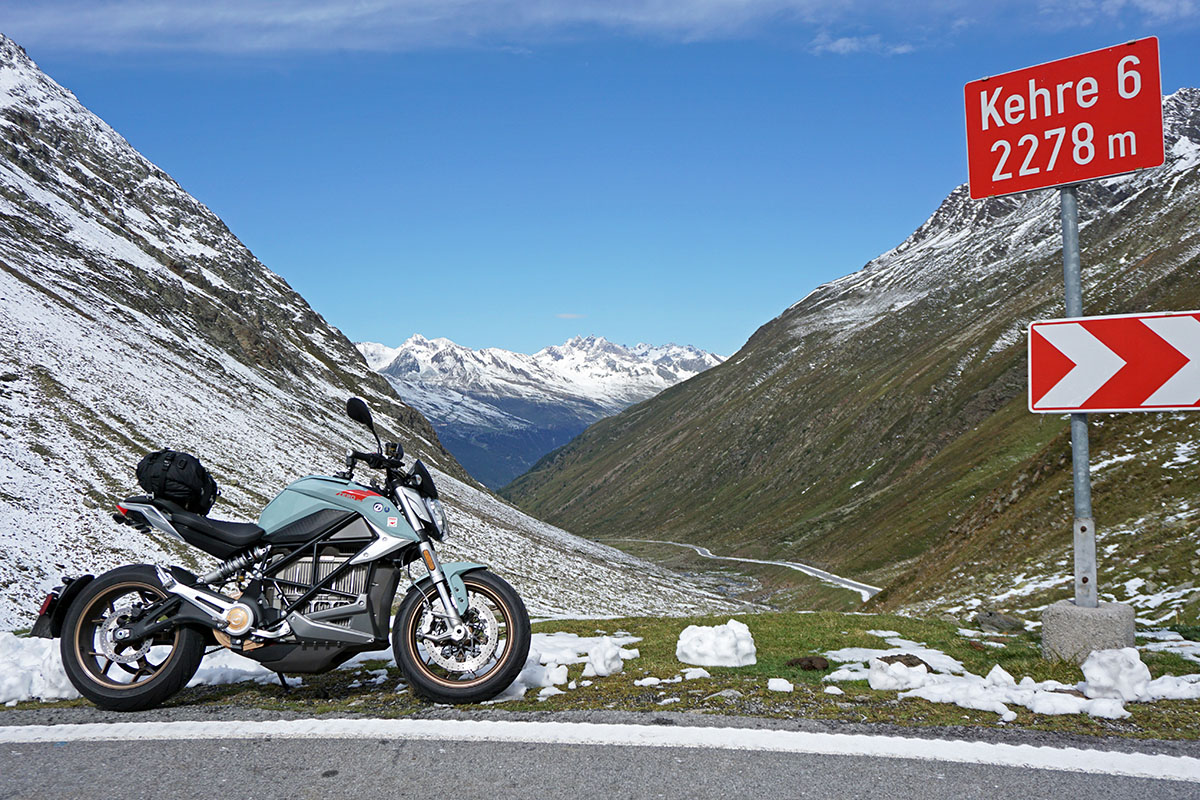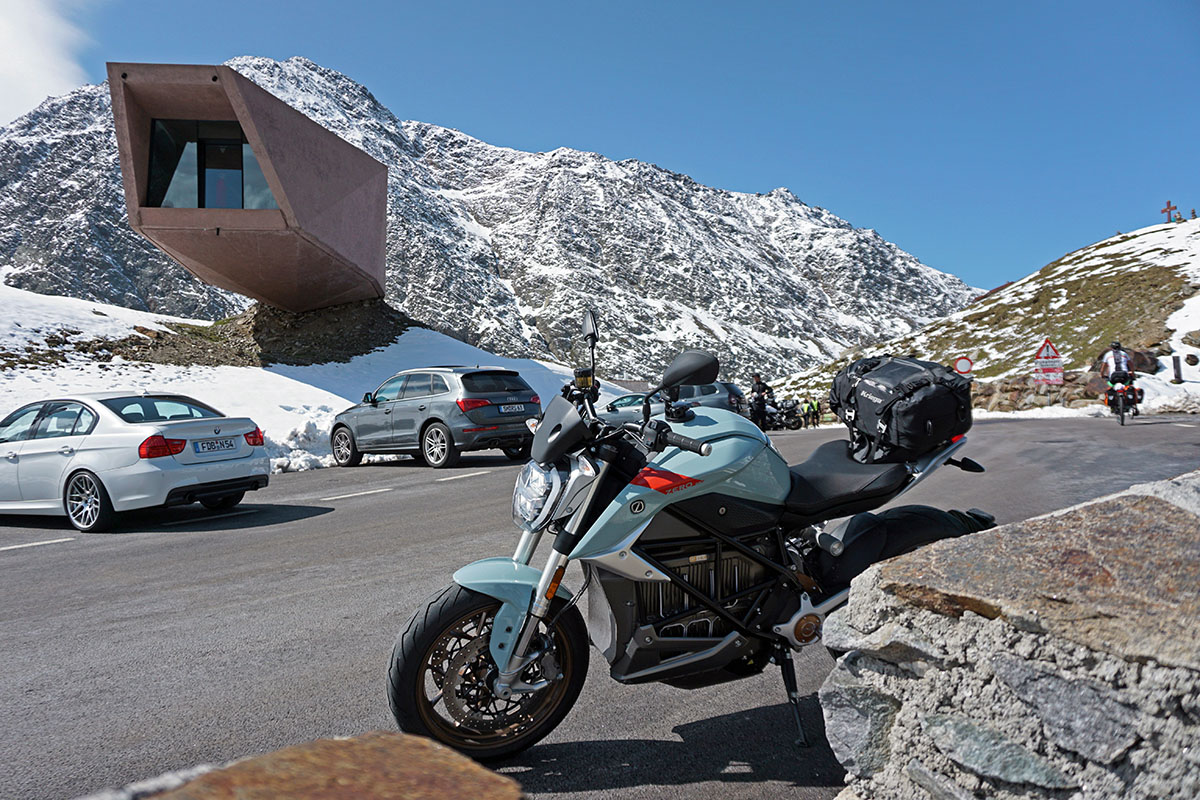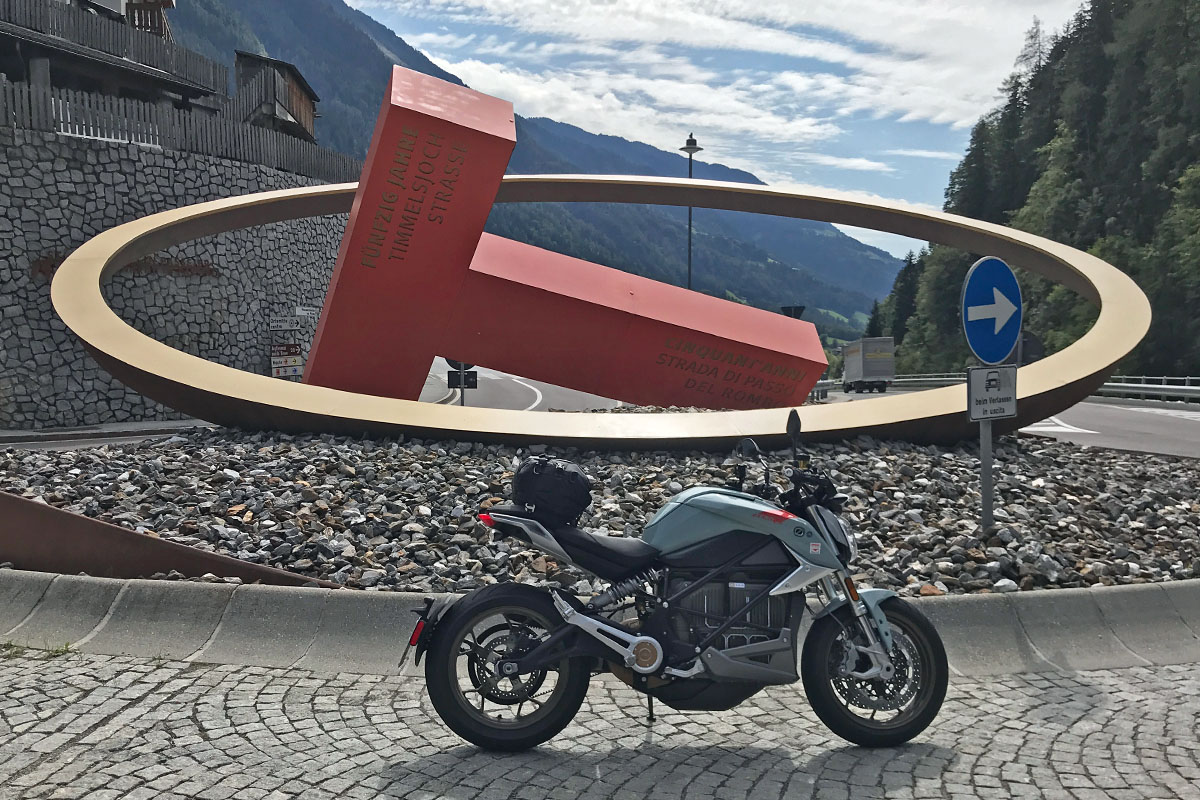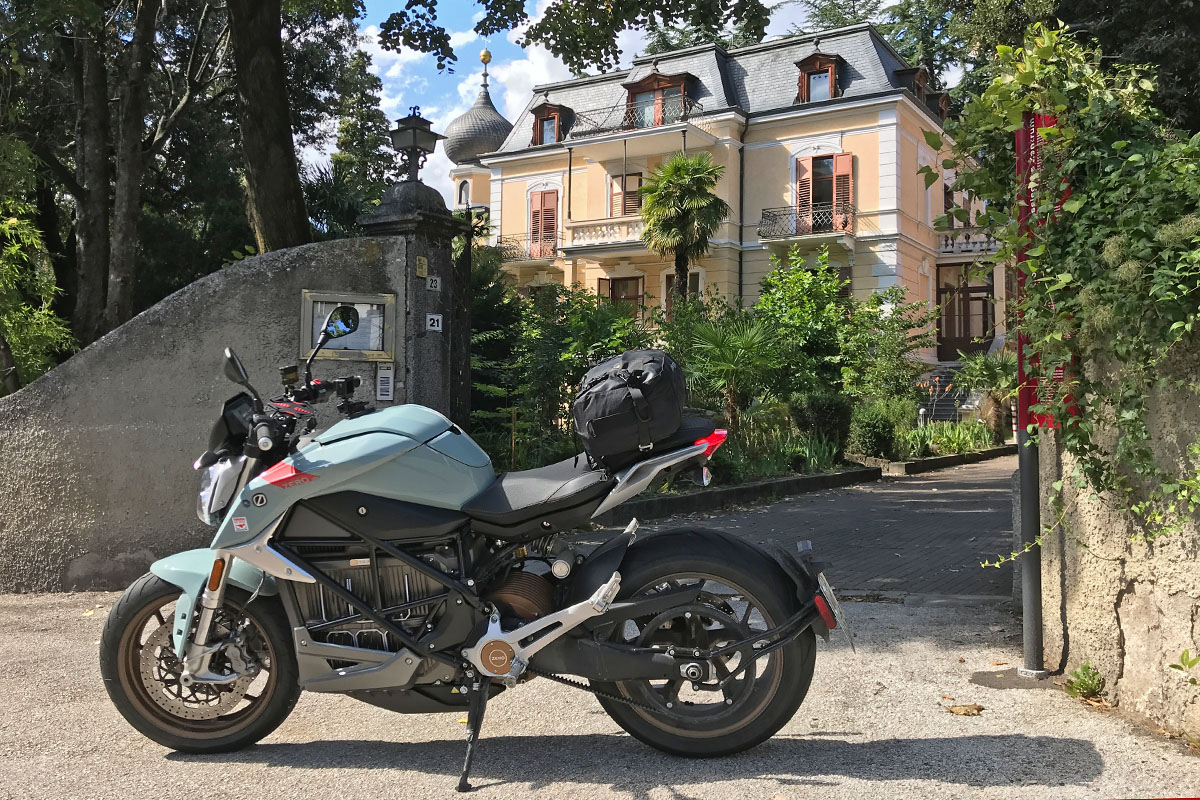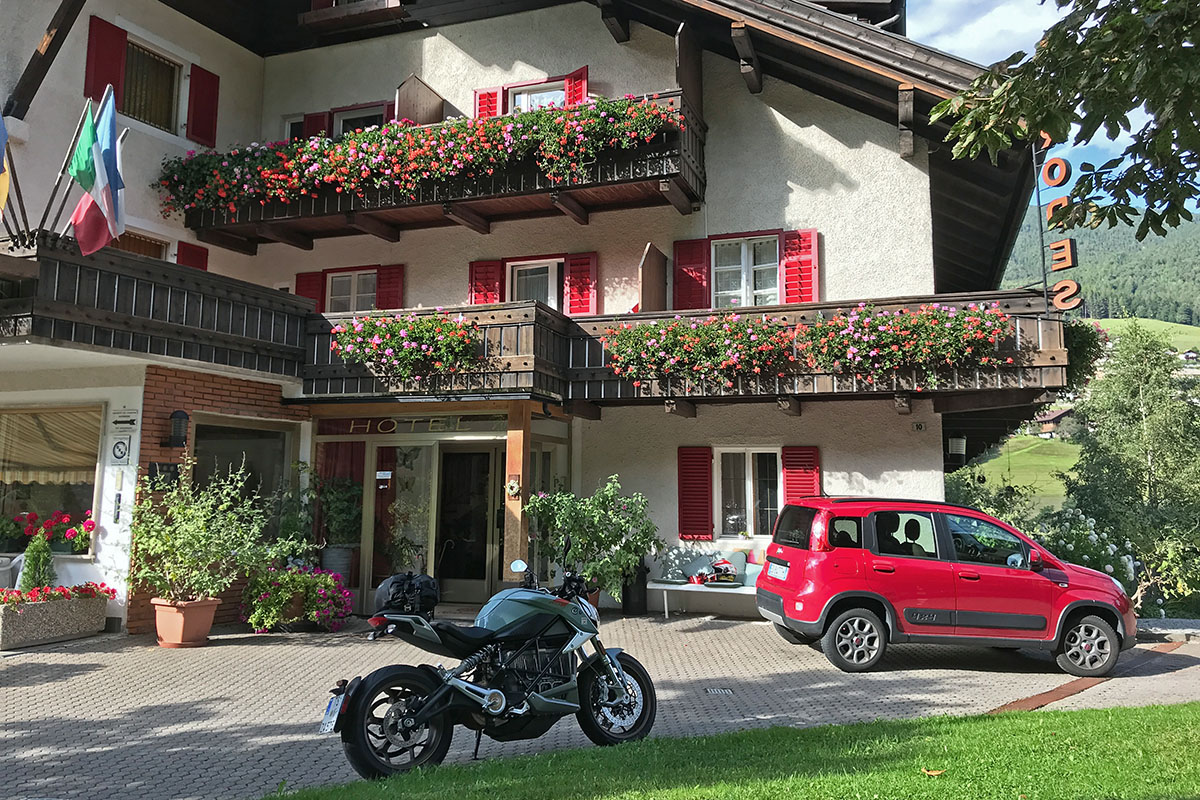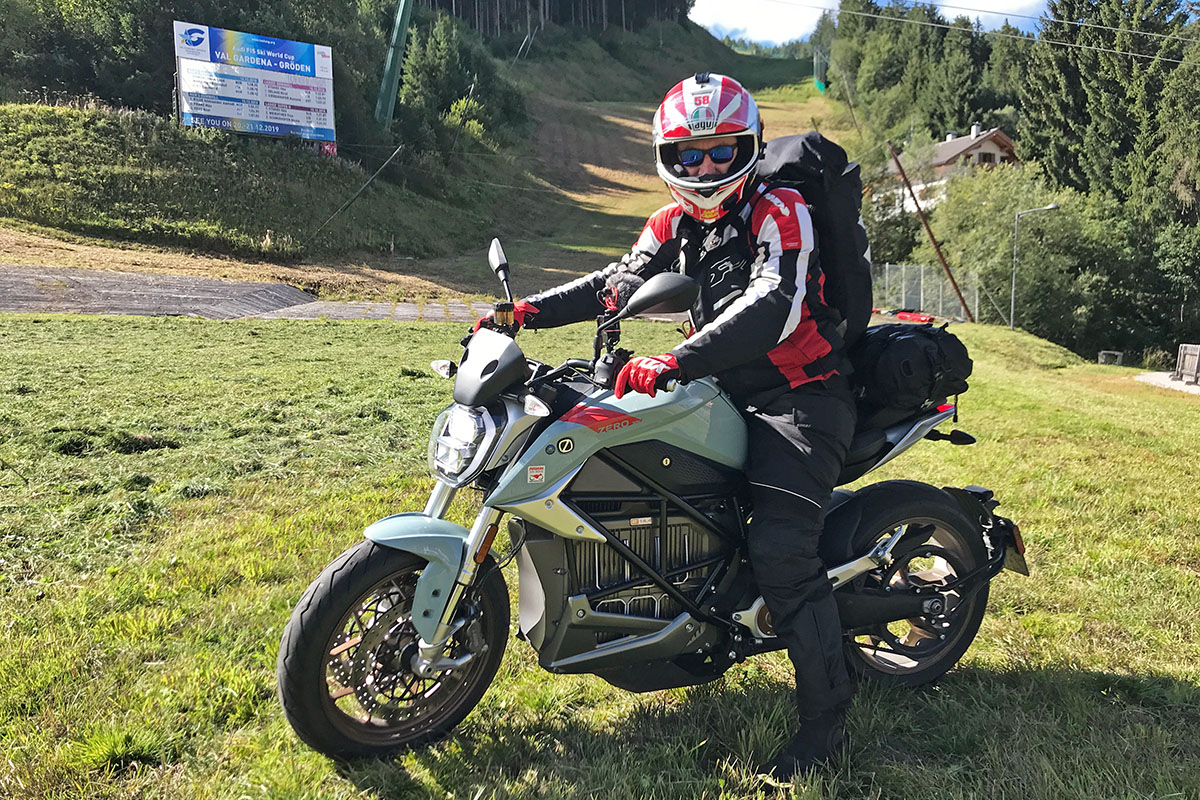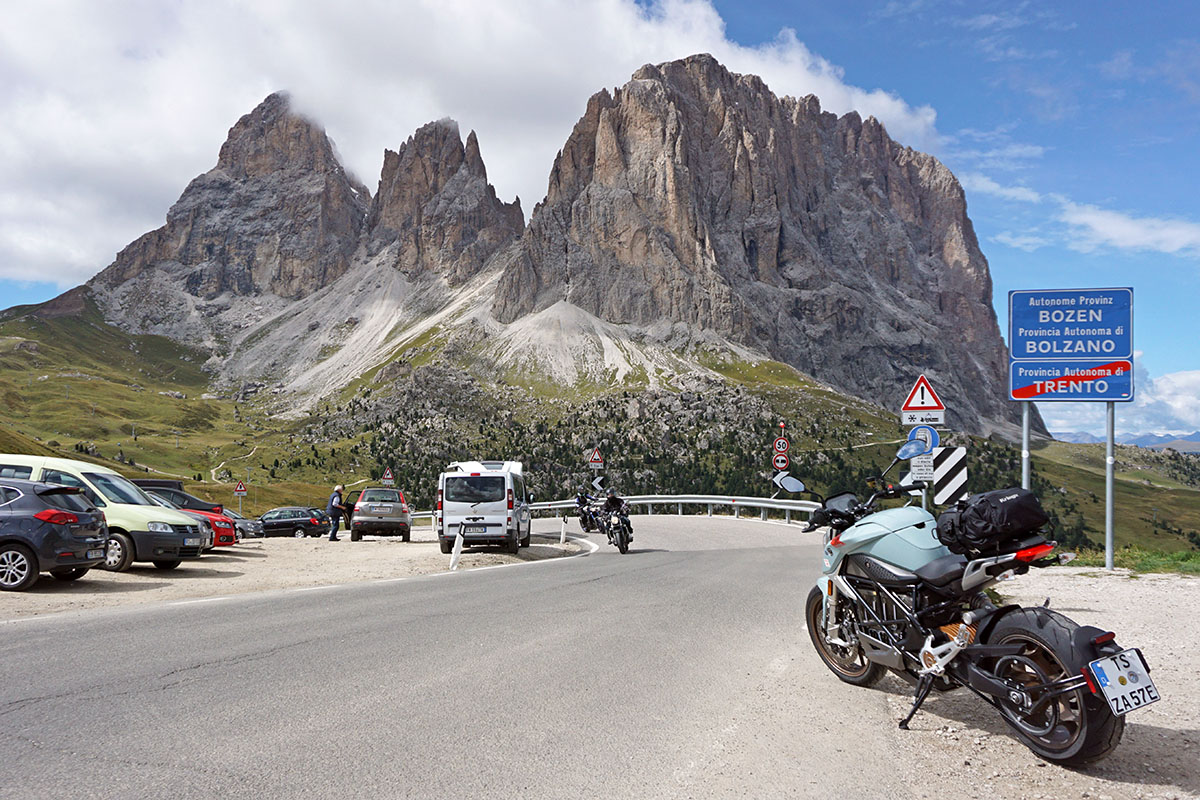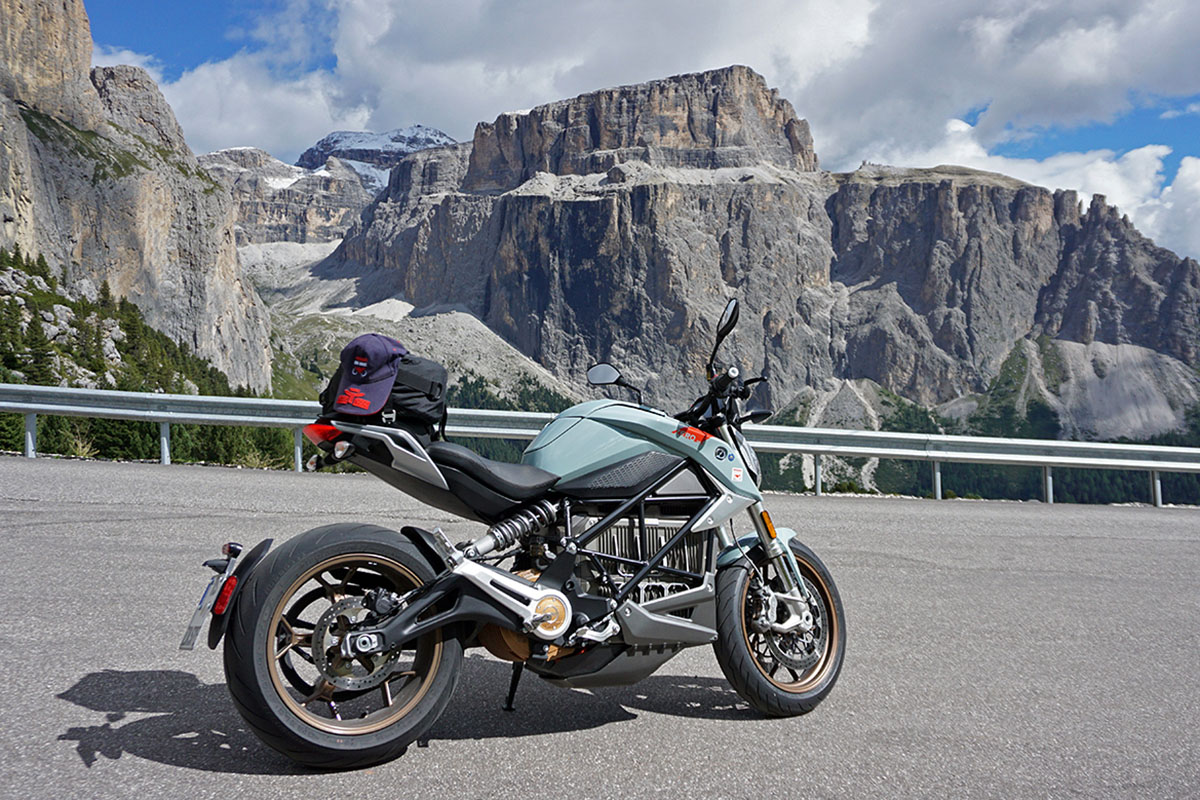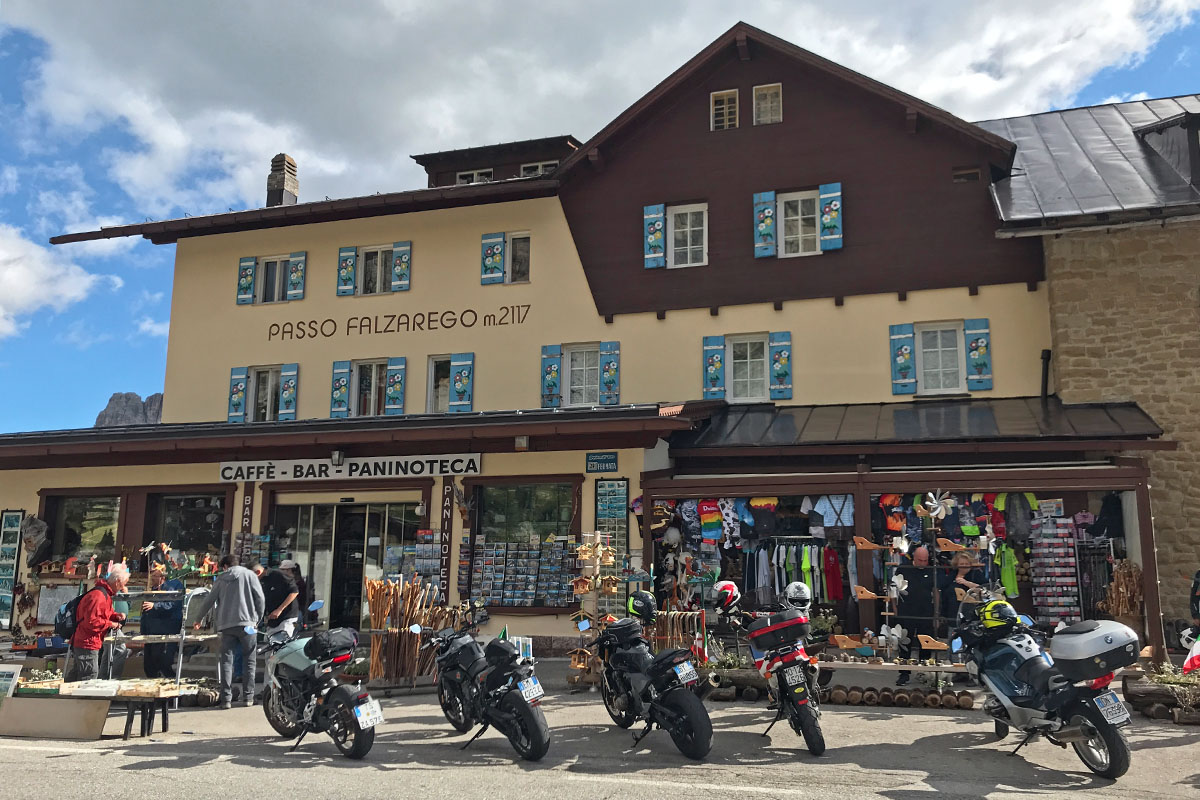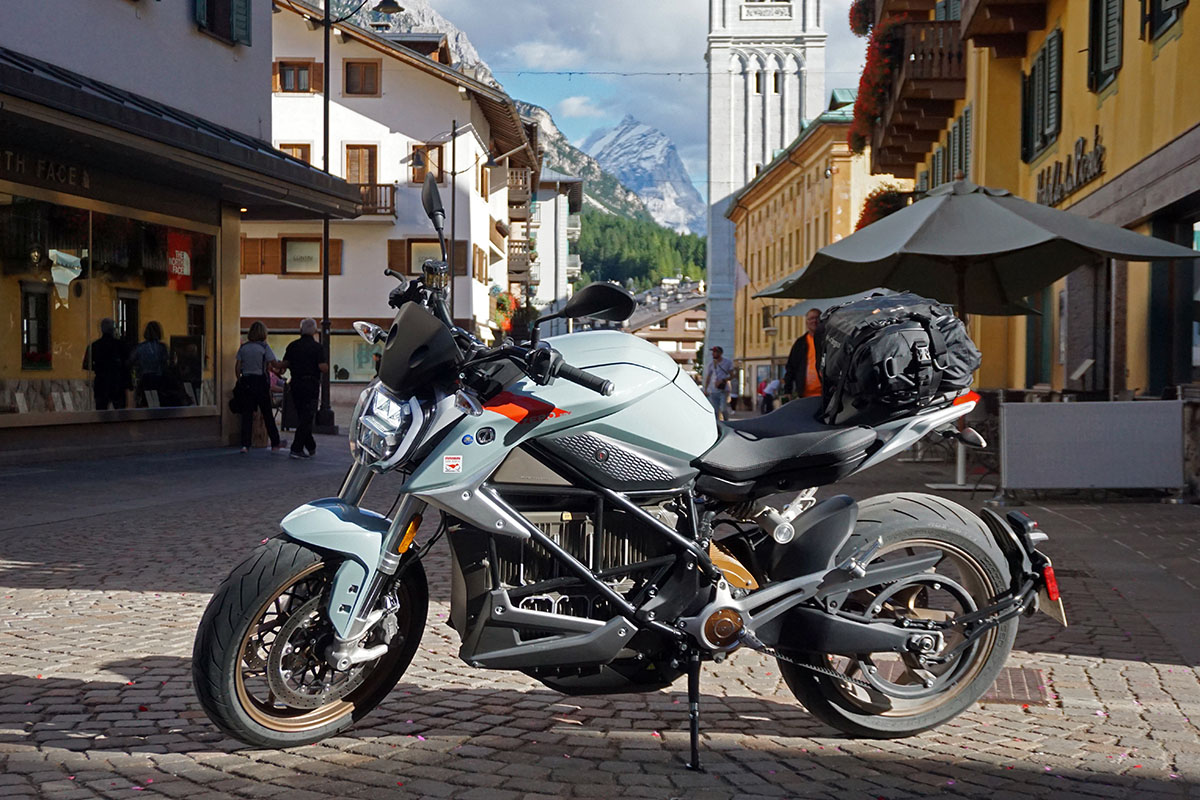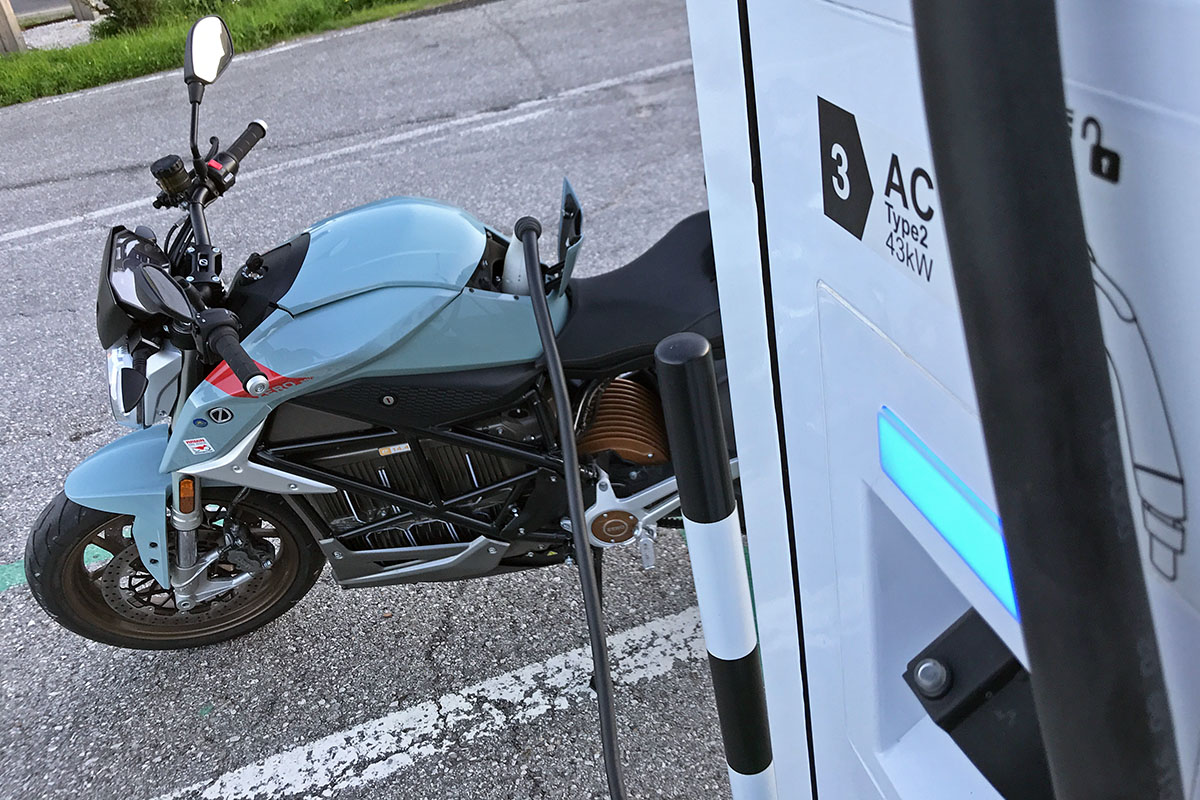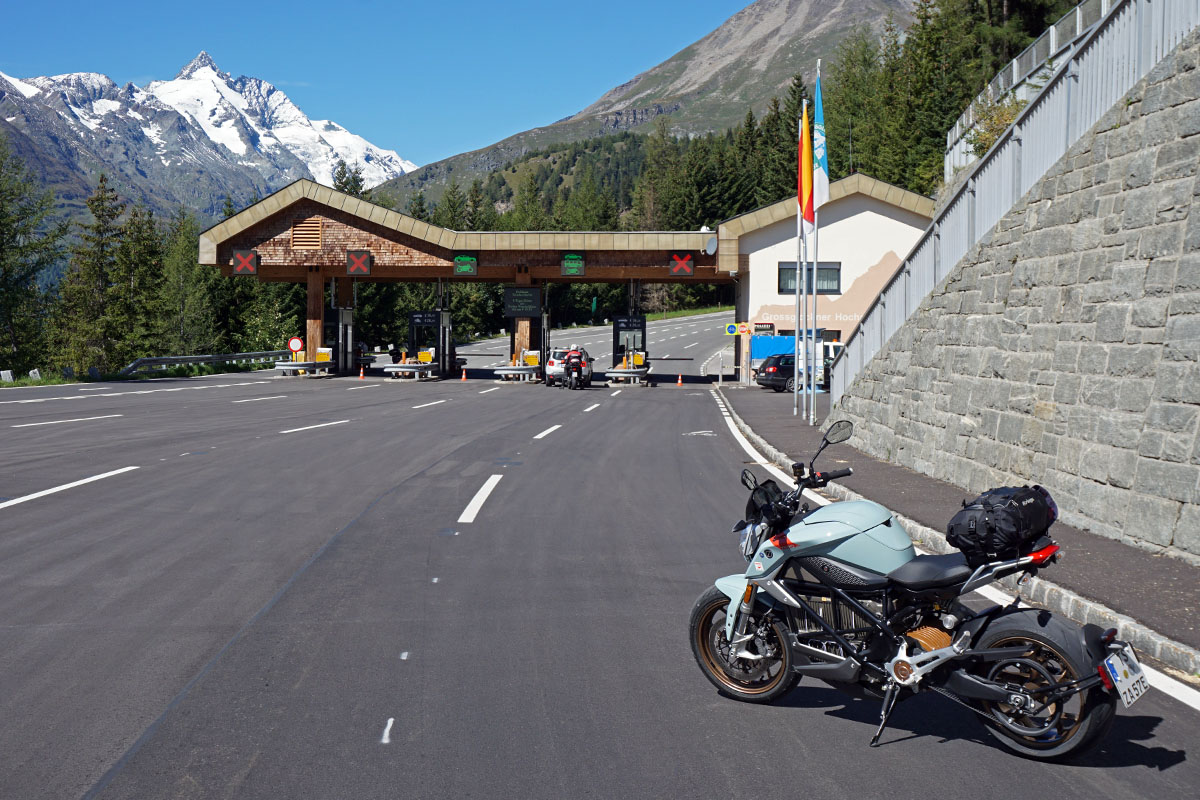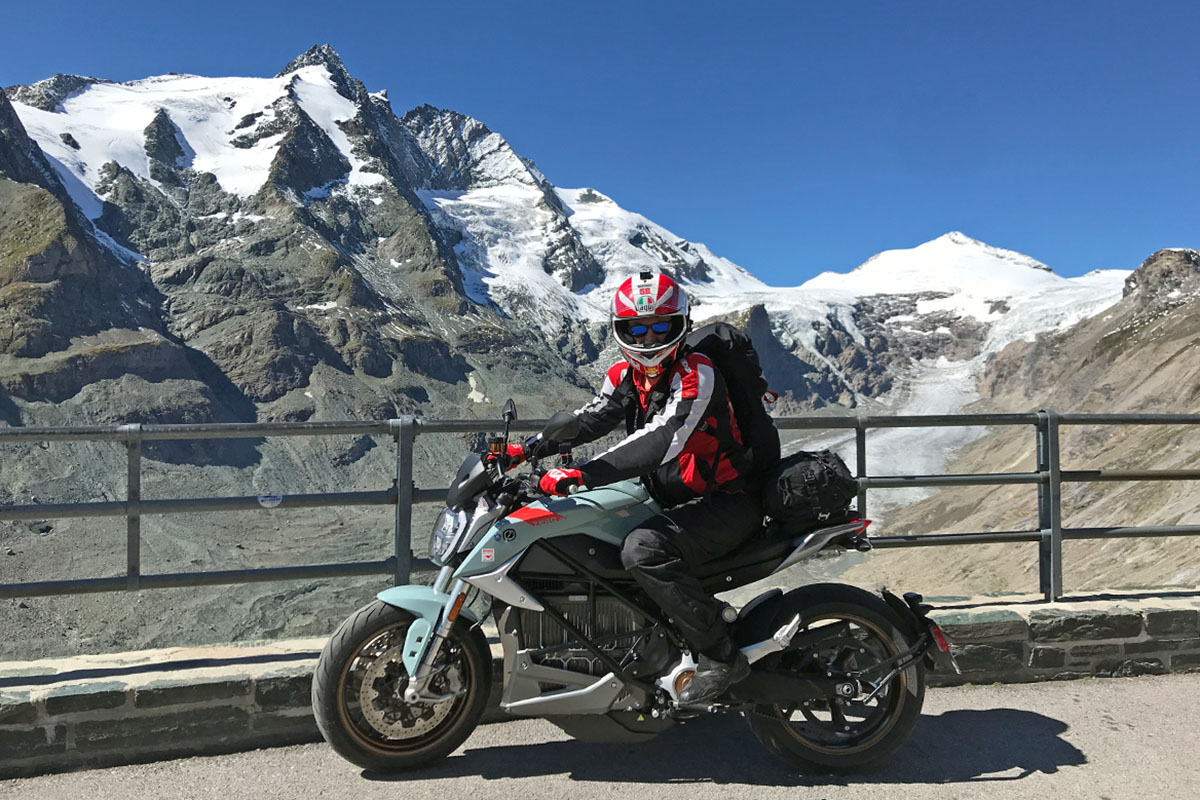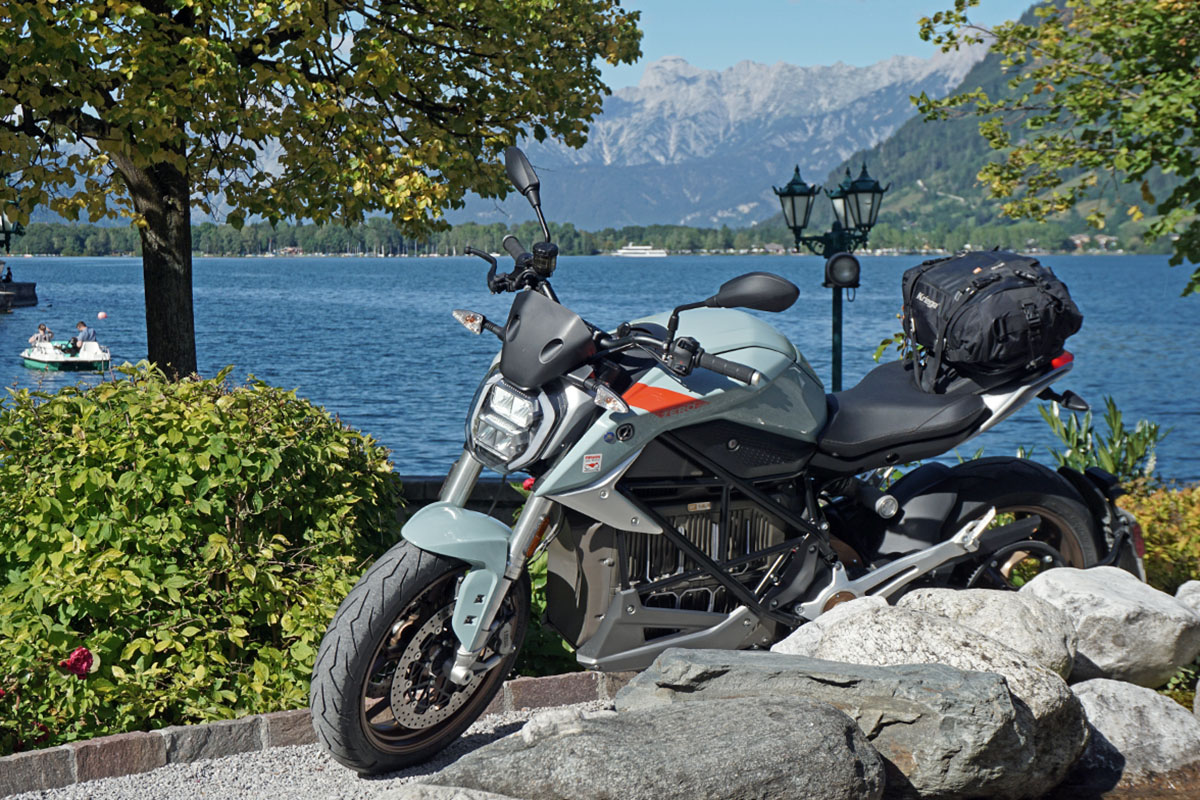Germany | Austria | Italy – Riding through the Alps on the Zero SR/F electric motorcycle, for five days with many wonderful impressions of the bike itself, all almost silently and without any exhaust fumes. That was “Zero SR/F Laps the Alps”, an eventful motorbike adventure, which demonstrated how today already you can travel trouble-free around the Alps on two wheels…
After I had compared the Zero SR/F electric motorcycle with my Ducati Monster 821 in the Rottenmanner Tauern, this time there was a bigger combined trip on the programme. More specifically, the five day tour of the Alps, “Zero SR/F Laps the Alps”, which took me through three countries and on numerous Austrian and Italian alpine passes. In this blog I’ll tell you about everything I experienced on the trip.
ZERO SR/F LAPS THE ALPS
It kicked off on the Monday morning with cloudy, autumnal, rainy weather in Traunstein, Bavaria. Auto Arnold, the Zero-dealership for south Bavaria and the state of Salzburg, had prepared a premium-version of the Zero SR/F for me. The “premium” features include, in addition to what you get with the standard-version, heated grips, aluminium handlebar ends, a small windshield and 6 kW charging speed. The “Seabright Blue” colour matched the ice and snow of the coming days terrifically. So that the charging port can be adjusted to its personal intended purpose, i.e. utilising the charging infrastructure, there is as standard no charging cable at the station for the integrated Type 2 charging port.
In Austria and Italy you need your own charging cable at the widespread 22 kW Type 2 charging stations. In Germany it is attached to the charging station and needn’t be carried with you, practical most of all for motorcyclists. In Austria and Italy only the much more rarely encountered 43 kW Type 2 charging stations have their own cable.
For my alpine tour I had a Type 2 single-phase charging cable for a maximum 3.6 kW charging rate at my disposal, with which I couldn’t completely exploit the possible speed of 6 kW with my own cable. Even though this altered my route a little bit, in hindsight it didn’t pose any real problem. At the suggestion of Markus Arnold, I also packed another charging cable compatible with household “Schuko” power sockets (standard in Europe) in my backpack, which proved invaluable during the course of the trip. For the rest of my luggage, I’d strapped a Kriega US-20 Drypack on the pillion, and the camera equipment was conveniently nestled inside the would-be petrol tank.
KITZBÜHEL – THE MOST LEGENDARY SPORT CITY IN THE ALPS AWAITS
Fitted out like this I took off on my journey to Tyrol. The first stop was the famous ski resort Kitzbühel, 74 kilometres (46 miles) away, where I arrived with 45% battery. In the legendary “Gamsstadt” (Chamois City, another name for Kitzbühel) there were two 22 kW charging posts directly in front of the town hall, courtesy of Kitzbühel Utilities, where you can recharge for free. During a short break for food I recharged at 2.8 kW putting me at 79%, with which I was predicted to have a 118 km (73 miles) range for my outgoing journey to Innsbruck.
On the 93 km (58 miles) leg to the Innsbruck market square I utilised 62% of the battery power while riding in Eco-mode at a normal travel pace. With 30 km (19 miles) range remaining, I still had 5 km (3 miles) to go, as predicted in Kitzbühel. After a small ride around the city I rode into the Sparkasse-Hörtnagl parking garage to charge. Karl Baumann, a tesla driver since day one, thankfully lent me his Type 2 charging cable there, so I could charge to 50% at the IKB 5.7 kW charging station in about an hour.
While we were chatting, it emerged that Karl, with his company, is in the process of developing electric powered yachts. The later attempt with a Type 2 cable, from his electric car mentioned earlier, with almost 6 kW charging rate didn’t work out, Karl did show me however a 43 kW Type 2 charging point with attached cable in a shopping centre car park in the Völs area just bordering Innsbruck, where I could have a test charge at 5.7 kW with his charge-card.
ÖTZTAL GLACIER ROAD – THE HIGHEST POINT OF MY ALPINE TOUR AT 2,830 METRES
In the morning there was still a fog over Innsbruck, in sunny Götzens it was a refreshing 6°C. The sun warmed the morning air quickly however and so with the temperature at 21°C, and 80% battery charge with a predicted 119 km (74 miles) range I left in the direction of Sölden. I covered the first leg on the autobahn at about 100 km/h (62 mph), since, I had seen on the way to Innsbruck the day before, the power usage sharply increases from about 120 km/h (75 mph). I also didn’t know what sort of charging situation I would to find in Sölden. Motivated for a bit of sport after a short pit stop at Café Pole Position located at the entrance to the Ötztal Valley, I rode the 30 km (19 miles) up to Sölden with an average speed of 73.3 km/h (45.5 mph). The partly winding road invited a brisk pace, then the many through-roads descended on the section again and again.
After a 91 km (57 miles) ride with 11% battery power and a 14 km (9 miles) range remaining, I reached my charging point at Berghof Sölden. The slightly quicker pace and 600 meter climb had drained the battery quite a bit. I only had a charging rate of 2.1 kW available to me and had to decide, in the interest of time, whether to charge for a long time, to have a longer range for the next leg, or to spend less time charging so I could travel in daylight for longer. With 48% battery power and a range of 62 km (39 miles) I started my race to the summit on the Ötztal Glacier Road. The ascent was a surreal experience for me. I had never ridden through a snow-covered rocky landscape up to a glacier like the Rettenbach glacier before, let alone silently and with the never-ending power of an E-bike like that of the Zero SR/F.
After the Rosi-Mittermaier-Tunnel, which leads to the Tiefenbach glacier, I reached the highest paved point of the Alps at 2,830 metres (9,285 ft) about sea level. The view of the glaciers up there was stunning, the breath-taking mountain panorama forced me to linger for a while. Finally I couldn’t allow myself to miss out on a few riding tests on ice and snow, and shortly before sunset it was time to head back down to Sölden. I was able to stay overnight at Hubi’s house, a close friend and by trade president of the Ducati Club in Tyrolean Oberland. I could recharge overnight with a plug socket in his garage.
TIMMELSJOCH PASS AT 2,509 METRES – THE GATE TO ITALY
Starting in Tumpen in the Ötztal Valley, after 46 km (29 miles) I reached the toll station shortly after Hochgurgl which opened onto the Timmelsjoch High Alpine Road at 2,175 metres (7,136 ft). The Top Mountain Crosspoint is home to the highest Motorcycle Museum in Europe. After having gone downhill again for a while, the route climbs to 2,509 metres (8,232 ft) in 11 sharp bends. After 54 km (34 miles) with 54% battery charge and a 69 km (43 miles) range, I had reached the Timmelsjoch pass, the gateway to the south. On this stretch I had covered an altitude change of 1,600 metres (5,249 ft), the temperature had plummeted to 8°C.
The question occurred to me, how I ought to get to Ortisei in Val Gardena, still over 100 km (62 miles) away. A charging stop was planned in Bolzano. However, it was possible for me to ride through to my destination without stopping, because of the excellent power recuperation in the SR/F’s eco-mode. I went via Merano to Bolzano at 262 metres (860 ft) above sea level. There it was 28°C, a whole 20°C warmer than up in the pass. After 117 km (106 miles), including an altitude change of 1,600 metres (5,249 ft) on the Timmelsjoch pass, the SR/F still had 36% charge and a predicted range of 101 km (63 miles).
There was still only 50 kilometres (31 miles) until I reached the day’s goal in Ortisei. Reassured I carried on, however I hadn’t considered that there was nearly another 1,000 metres (3,281 ft) in altitude change waiting for me on the rest of my journey. By the end it was getting to be a close one. After 172 km (107 miles) in total, I reached Ortisei in Val Gardena at 1,250 metres (4,100 ft) above sea level, with 3% battery power and a range of 4 km (2.5 miles) remaining. I was welcomed very pleasantly at Hotel Rodes, and an extra cable was set up outside, so that I could recharge overnight again with the mains power.
THROUGH THE DOLOMITES – FROM THE VAL GARDENA VALLEY TO THREE PEAKS
The next day I hit the road in the afternoon, on my way through the Val Gardena Valley to scale some passes in the Dolomites. After a short photo stop at Saslong, the famous Skiing World Cup men’s downhill slope in Val Gardena/Gröden, the route ran through Santa Christina in Val Gardena to the base of the Sella Pass (Sellajoch). The marvellous backdrop of the towering, craggy Dolomites came up to meet me. After 1,000 metres (3,280 ft) in altitude difference I had arrived at the “Passo Sella” at 2,218 metres (7,277 ft). After a descent it lead up to the Pordoi Pass, which at 2,239 metres (7,346 ft) is the second highest continuously paved pass in the Italian Dolomites. I still had 58% charge and a 72 km (45 miles) range to play with after the two passes.
After yet another pass, the Falzarego Pass at a height of 2,105 metres (6,906 ft), I reached the exclusive winter sport resort, Cortina d’Ampezzo, after exactly 100 km (62 miles) and with 40% battery power. So that I reached the day’s destination 130 km (81 miles) away in Heiligenblut at the foot of Grossglockner (the tallest mountain in Austria), a pit stop was called for. For the purpose I had chosen the area of Toblach in the Hochpustertal valley, which is also labelled as “the Gateway to the Dolomites”, as you can find a 43 kW Type 2 charging station there with a fixed charging cable. Before that I still had another pass to deal with, “Passo Tre Croci” (Three Crosses Pass), which I got to with 31% charge. Passing the famed, enormous “Three Peaks” in the Sexten Dolomites, I arrived in Toblach near the Austrian border, after riding for 140 km (87 miles) with a remaining 40 km (25 miles) range.
After an hour’s charging at 5.7 kW with an Alperia charging station, I made my way to Heiligenblut via Lienz in East Tyrol, the outside temperature was 22°C and I was riding with 73% battery power and a 153 km (95 miles) range. 90 km later I arrived there with 10% charge and 13 km (8 miles) in range left. The 12°C temperature drop and altitude change had made sure that the range had reduced by a third, compared to the computer’s prediction. Thankfully, I could recharge again overnight with a household plug at my accommodation, this time it was the Hotel Rupertihaus in Heiligenblut, with a view of the Grossglockner mountain.
THE GROSSGLOCKNER – THE CROWNING GLORY OF AN EXTROADINARY JOURNEY
After a host of motorcyclists had already ridden loudly past my hotel balcony in Heiligenblut, I started off at Midday with 18°C, in my silent and emission-free fashion I was accustomed to, on the way up to the highest mountain in Austria. It was Friday and a glorious day, and for that reason many travellers as you would expect were driving up to the Grossglockner High Alpine Road. It was incomparable to the day at the beginning of June, when as one of the first motorcyclists of the season I was almost completely alone on the High Alpine Road with my Zero DS.
The first leg lead me from Heiligenblut again up until Franz-Josefs-Höhe at 2,369 metres (7,772 ft) above sea level. After more than nearly 1,000 metres (3,280 ft) in altitude change and 19 km (12 miles) ridden, I got up there with 84% battery charge. So this time I didn’t take advantage of the charging point, and continued straight down again to the roundabout and then up to the Hochtor. The pass, sitting at 2,504 metres (8,215 ft), connects Kärnten (Carinthia) to Salzburg. The SR/F’s cockpit display showed 73% power in combination with 96 km (60 miles) in range remaining. The next destination was the Edelweißspitze, at 2,575 metres (8,448 ft) being the highest point of the Grossglockner High Alpine Road.
Having started up above with 68%, I had 73% charge at the Ferleiten tollgate due to the energy recuperation technology. Comparable to the sensation of engine breaking on a petrol bike, energy is recycled from that into the 14.4 kWh lithium-ion battery of the SR/F. Through proactive riding and as little use of the brakes as possible the effect can still be increased. With this in mind I could manage the 108 km (67 miles) to Traunstein via Zell am See without a pit stop and arrived there after 166 km (103 miles) with 7% charge. All in all, with the Zero SR/F in the last five days I had covered 919 problem-free, joyous kilometres (571 miles).
ARMIN ON BIKE CONCLUSION
The five day alpine tour with the Zero SR/F has shown that with a little bit of preparation, it’s very possible to travel in the mountains for a few days with an electric motorcycle. It’s possible to cover 170-180 km (105-110 miles) with up 3,000 metres (9,843 ft) in altitude change without stopping to recharge. If you schedule a charging stop of 1-2 hours (with 12 kW i.e. 6 kW charging rate) at a 22 kW Type 2 charging point, you can double the range. 350 kilometres (217 miles) in the mountains are completely sufficient then for an extended day’s travel. If the chosen accommodation doesn’t have its own charging post for you to use, it is recommended to charge with a standard household plug overnight. That way, after a long trip, you spare yourself searching for a separate charging point in the evening.
Otherwise, the High-End Californian E-bike comes with all the technical features of a comparable premium petrol bike. The peak power of 82 kW and peak torque of 190 Nm, which is available from the first motor revolution, lend the SR/F impressive acceleration and pulling power, which others like it strive for. From my experience I can only recommend that you try this new form of mobility at least once and with it make the most of this smooth but powerful way of travelling.
Text and photos: Armin Hoyer – arminonbike.com





